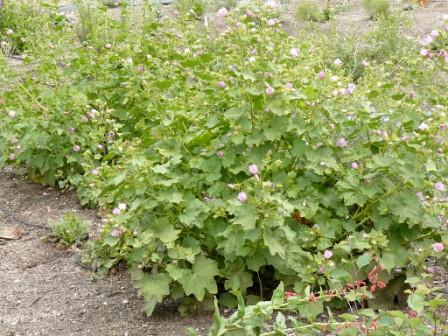Mountain Hollyhock in the Landscape

Diane Jones, Draggin' Wing Farm, Water-thrifty Plants for Idaho
Scientfic Name: Iliamana rivularisCommon Name: Mountain Hollyhock, River Mallow, Maple Mallow, Streambank Globe Mallow
Description: Shrubby in appearance, with beautiful Maple-like leaves. Mountain Hollyhock dies back to the ground in winter and booms up in spring, rapidly reaching to 3' to 5' by early summer. It then puts on a show of the Intermountain West's prettiest wildflowers stalks of small cup-shaped mini-hollyhocks in shades of pink and rose.
Native Habitat: Mountain meadows, coniferous or aspen forests or brush communities 4,500-9,000 from Washington East to Colorado. Will adapt readily to lower elevations. Very cold hardy.
Cultural Requirement
Soil: From dry to moist, well-drained or ordinary garden soil.
Moisture Tolerance: Moderately drought-tolerant.
Sun/Shade/Preference: Full sun, part shade.
Transplanting: Easy.
Propagation: Seed.
Maintenance (pruning, fertilization, deadheading, division, irrigation, etc): Remove dead branches in late fall or early spring.
Insect, disease, or other problems: None of concern.
Landscape Value
Use in the Landscape: Can be used as a single specimen plant toward the back of a bed or combined with other tall flowers and grasses naturalized in a meadow setting. Could also be used or as part of a mountain brush, aspen understory planting or in riparian restoration.
Foliage: Large maple-like leaves.
Flower: Spikes of pale pink to deep rose flowers that resemble miniature hollyhocks.
Timing: June-September
Color: Pink-rose.
Fruit: Capsule.
Form: Large, irregular shrub-like form, dying to the ground in winter.
Ultimate Size: Three to five feet wide and tall.
Rate of Growth: Rapid annual growth each spring.
Suggested Plant Partners: Geum triflorum, Lewis Flax, any tall Penstemon.
Availability: Available at specialty nurseries.
Cultivars: None.
References:

